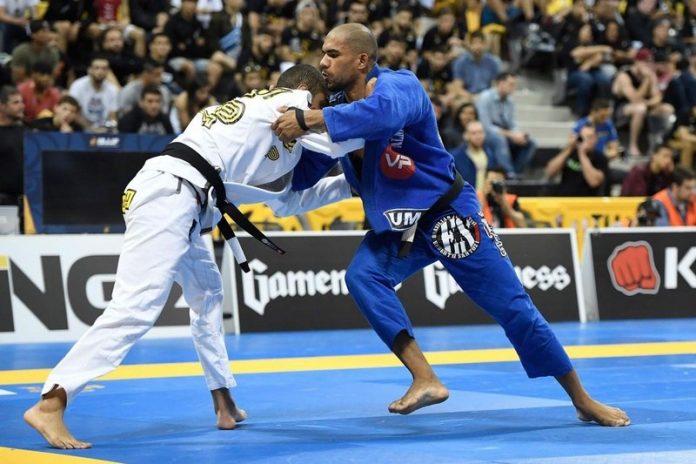
The subject of getting the fight to the ground in BJJ is one that has been beaten to death. We all accept that BJJ is not the most efficient grappling martial art for taking someone down. That said, it does present a solid obstacle for even the most proficient of takedown artists. BJJ players can be notoriously hard to take down when they’re the ones’ dictating rules of engagement on the feet. Throw in some BJJ takedown techniques into that and you’re going to be able to deal with everyone without much trouble. If you’re really interested in dominating every moment when standing you should look into the snap down.
The snap down is one of those moves that people usually skip. Even if they give it a try. BJJ players often get it so horribly wrong that they abandon it quickly. This is a real pity since the snap down is one of those moves that fits perfectly into BJJ takedown techniques. Grip fighting and positional dominance are the two deciding micro-battles that determine the outcome of a standing exchange. The snap down allows you to dominate both, and get the fight to the ground at any moment. On top of that, it is not at all complicated to learn.

Neil Melanson is one of the most complete grapplers in the world. he has extensive experience in catch wrestling, BJJ, Judo and Sambo. So when he issues an instructional, you get it and listen to what he has to say. “The Headhunter guillotine Series” is a DVD set in which he goes over everything headlock related, including snap downs.
The Snap Down
So, what exactly is the Snap down? It is a simple and very effective method of getting your opponent completely out of alignment. The snap down is basically a way of getting your opponent’s head lower than yours. However, when I say lower, I mean really low. Like, face on the mats low. While this is the ideal version of events, in most cases, the opponent will react, opening up a host of attacks. Which is exactly why the snap down is a staple of BJJ takedown techniques.
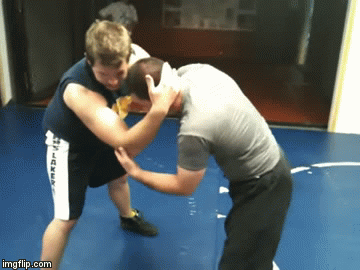
To get your opponent’s posture down, you’ll need to put in some effort, though. Gi or No-Gi, you’ll have to manipulate the opponent’s base to get their posture broken. The principle of Kuzshi is key here. To get your opponent off balance, you need to stagger their feet first. The snap down gives you the mean to do so by simply going back and keeping your grips tight. Snaping the opponent down from there is all about fast and explosive movement.
BJJ Takedown Techniques
Taking someone down with the snap down is actually a very straightforward thing. Once you have the grips in you simply step back and to the side a bit to destroy their base. Once you have it, use the arms to pull the opponent’s head and shoulders down. If you go to one or both knees during the process, your opponent will end up on the ground for sure. Even better, they’ll be in a turtle position, with a front headlock readily available for you.
Apart from a direct takedown option, the snap down is the perfect entry to unite a number of BJJ takedown techniques. If there’s one thing that the snap down offers for certain, it is that your opponent is going to end up bent forward. IF they resist the direct takedown, or you cut it short on purpose, they have very predictable options let. The instinctual thing is straightening up in an effort to regain posture. This, however, given the clinch (collar) grip is nearly impossible. It also opens them up to headlocks, arm drags, double and single leg takedowns, trips, Judo throws, and even submissions.
The snap down is more of a position zero for launching Jiu-JItsu attack than anything else. Yes, it is a very viable takedown on its own, but it works much better if you use it to launch other attacks.
Gi and No-Gi Combinations
Let’s now get into some specific examples of how the snap down can work for you. Firs,t we’ll go over a couple of No-Gi options, before turning to the Gi snap down. Finally, we’ll round off the snap down game with a very cool submission setup that doubles as a takedown too. Plus, it works in both Gi and No-Gi!
No-Gi Snap down To Double Leg
The very fundamental use of the Snap down is without the Gi. This is logical, as it is, after all, a wrestling move. From the basic head and arm tie, the goal is to execute the Snap down as before. Move your feet back sot hat you create space and focus on snapping the opponent down. In order to be heavy, you’ll also need to drop to your knees as you pull. This time, however, you’ll crouch low instead of dropping to the knees.
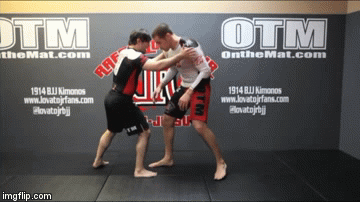
No-Gi Snap-down To Russian Tie Snap
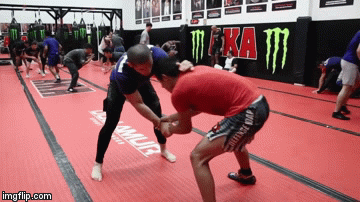
The snap down is the key part since it creates a position in which your opponent ends up fairly low. From there it’s not hard for you to get lower than them, and use the momentum of them raising up to execute the takedown.
Gi Snap-down To Ankle Pick
With the Gi, the mechanics of the Snap down remain pretty much the same. All that changes is grip placement and how much you can off balance an opponent. Since the Gi creates some slack, if you’re really good at it, you can actually create more Kuzushi this way than in No-Gi. Furthermore, it opens up many more BJJ takedown techniques, as Judo throws now enter the frame.
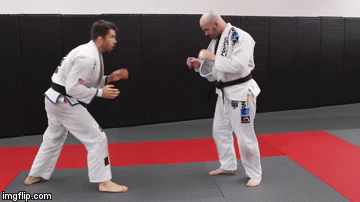
Gi Snap down Train Wreck
The train wreck is a takedown that is as powerful as it sounds. It is actually a Judo modification that is very specific to BJJ. And, the snap down makes it a lot more devastating. The idea here is to be relentless in snapping your opponent down, though. The goal is to truly shake your opponent up as you repeat the motion over and over again. Then, the best course of action is to threaten the foot sweep.
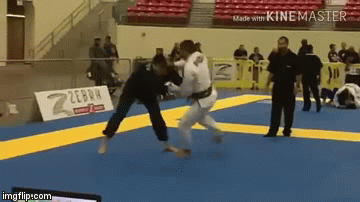
Snap-down To Guillotine
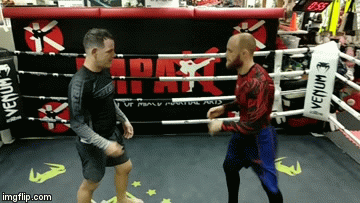
Finishing is also very versatile. You can finish by sitting down in a regular fashion or try to roll over or to the side. Whatever option you choose, you’ll have to mess things up really big to lose the submission from there.
Double Leg Takedown – How to Do It & The Most Common Mistakes
https://bjj-world.com/how-to-make-single-leg-takedown-work/


![Darce Choke Encyclopedia – Origins, Mechanics and Variations [2025] BJJ, choke, Brabo, BJJ Darce Choke, D'arce Choke, Darce BJJ Choke](https://bjj-world.com/wp-content/uploads/2017/11/JungPoirierLeeYahoo-218x150.jpg)









![Mastering Your Sales Eliot Marshall DVD Review [2025] Mastering Your Sales Eliot Marshall DVD Review](https://bjj-world.com/wp-content/uploads/2025/04/mastering-your-sales-eliot-marshall-dvd-review-218x150.png)

![Modernized Headquarters Passing Shawn Melanson DVD Review [2025] Modernized Headquarters Passing Shawn Melanson DVD Review](https://bjj-world.com/wp-content/uploads/2025/04/headquarters-passing-shawn-melanson-dvd-review-218x150.png)
![4 Weeks To A Better Guard Travis Stevens DVD Review [2025] 4 Weeks To A Better Guard Travis Stevens DVD Review](https://bjj-world.com/wp-content/uploads/2025/04/4-weeks-to-a-better-guard-travis-stevens-dvd-review-218x150.png)
![DONE! Gordon Ryan Retiring—and Danaher Might Not Be Far Behind! [2025] Gordon Ryan Retiring—and Danaher Might Not Be Far Behind!](https://bjj-world.com/wp-content/uploads/2025/04/LEG-GRABS-3-1-218x150.png)



![Darragh O’Conaill Crucifix Encyclopedia DVD Review [2024] Darragh O'Conaill Crucifix Encyclopedia DVD Review](https://bjj-world.com/wp-content/uploads/2024/10/darragh-oconaill-crucifix-encyclopedia-dvd-review-100x70.png)






![10th Planet Leg Locks Jeremiah Vance DVD Review [2025] 10th Planet Leg Locks Jeremiah Vance DVD Review](https://bjj-world.com/wp-content/uploads/2025/01/10th-planet-leg-locks-jeremiah-vance-dvd-review-100x70.png)
![Shoulder Lock Mastery Zach Green DVD Review [2025] Shoulder Lock Mastery Zach Green DVD Review](https://bjj-world.com/wp-content/uploads/2024/12/shoulder-lock-mastery-zach-green-dvd-review-100x70.png)
![Special K Guard Neil Melanson DVD Review [2025] Special K Guard Neil Melanson DVD Review](https://bjj-world.com/wp-content/uploads/2025/03/special-k-guard-neil-melanson-dvd-review-100x70.png)
![Shin to Shin Eoghan O’Flanagan DVD Review [2025] Shin to Shin Eoghan O'Flanagan DVD Review](https://bjj-world.com/wp-content/uploads/2024/12/shin-to-shin-eoghan-oflanagan-dvd-review-100x70.png)
![Top Half Guard Neil Melanson DVD Review [2025] Top Half Guard Neil Melanson DVD Review](https://bjj-world.com/wp-content/uploads/2025/02/top-half-guard-neil-melanson-dvd-review-100x70.png)
![No-Gi Pressure Mastery JT Torres DVD Review [2024] No-Gi Pressure Mastery JT Torres DVD Review](https://bjj-world.com/wp-content/uploads/2024/10/no-gi-pressure-mastery-jt-torres-dvd-review-100x70.png)

![Assassin Choke Baret Yoshida DVD Review [2024] Assassin Choke Baret Yoshida DVD Review](https://bjj-world.com/wp-content/uploads/2024/10/assassin-choke-baret-yoshida-dvd-review-100x70.png)
![Compass Kneebar System Charles Harriott DVD Review [2024] Compass Kneebar System Charles Harriott DVD Review](https://bjj-world.com/wp-content/uploads/2024/11/compass-kneebar-system-charles-harriott-dvd-review-100x70.png)
![Jiu-Jitsu For Old Guys Guard Retention Bernardo Faria DVD Review [2025] Jiu-Jitsu For Old Guys Guard Retention Bernardo Faria DVD Review](https://bjj-world.com/wp-content/uploads/2025/03/old-guys-guard-retention-bernardo-faria-dvd-review-100x70.png)

![Countering with Crab Ride Anthony Budion DVD Review [2025] Countering with Crab Ride Anthony Budion DVD Review](https://bjj-world.com/wp-content/uploads/2025/03/countering-with-crab-ride-anthony-budion-dvd-review-100x70.png)
![Slay The Wrestle Up Guard Nick Rodriguez DVD Review [2024] Slay The Wrestle Up Guard Nick Rodriguez DVD Review](https://bjj-world.com/wp-content/uploads/2024/12/slay-the-wrestle-up-guard-nick-rodriguez-dvd-review-100x70.png)

![Standing Leg Entries Alex West DVD Review [2025] Standing Leg Entries Alex West DVD Review](https://bjj-world.com/wp-content/uploads/2025/03/standing-leg-entries-alex-west-dvd-review-100x70.png)


![Upper Body Chain Attacks Janine Mocaiber DVD Review [2025] Upper Body Chain Attacks Janine Mocaiber DVD Review](https://bjj-world.com/wp-content/uploads/2025/03/upper-body-chain-attacks-janine-mocaiber-dvd-review-100x70.png)
